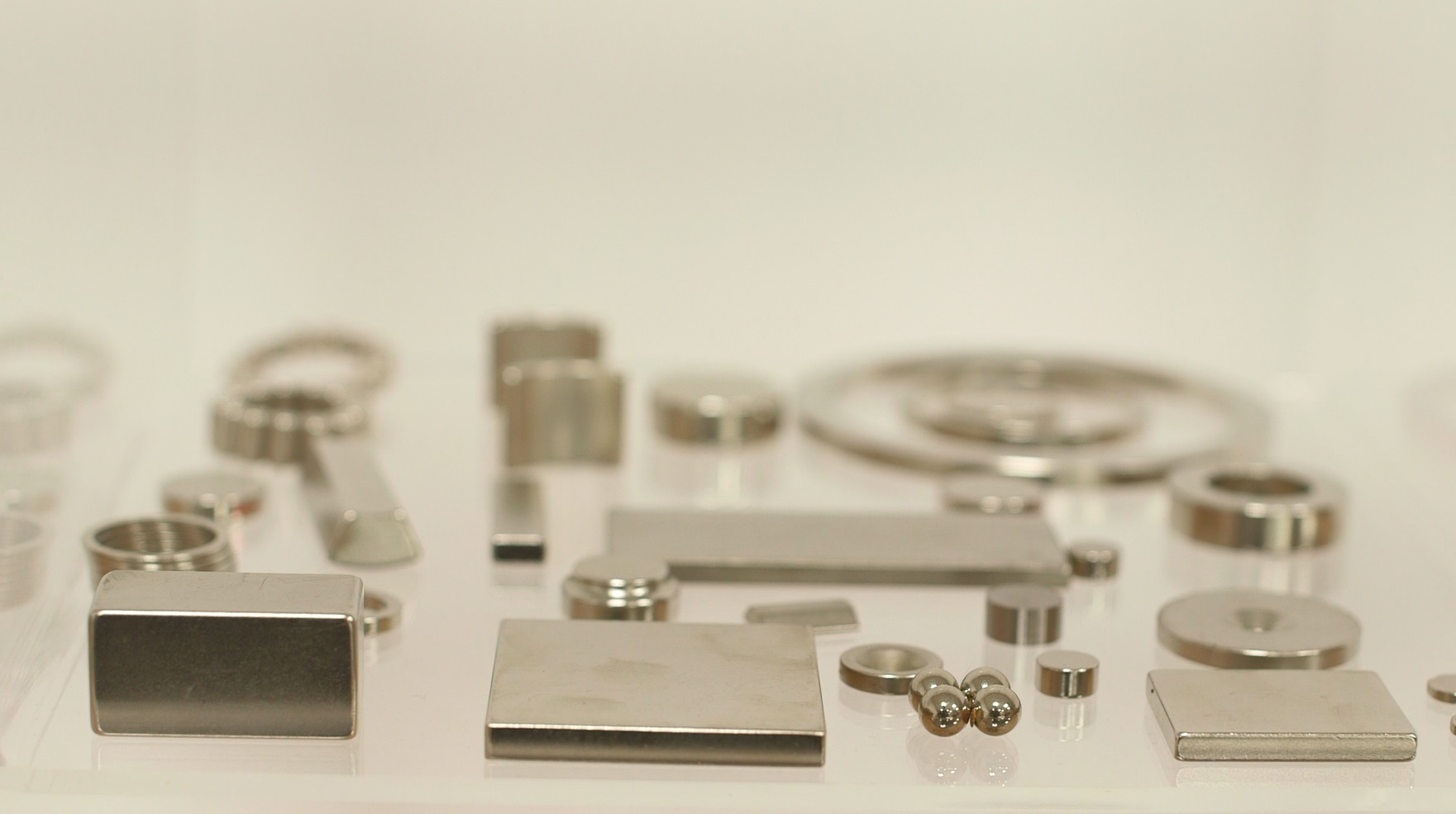Discover the differences between permanent magnets and electromagnets
Both types, that is to say, permanent magnets and electromagnets, are used in everyday life and industry. It is important to know the differences between the two types of magnets.
There is a great variety of magnets: from magnetic office products to large industrial magnets that can lift and move entire cars or other heavy objects made of metal by their magnetic force alone. The magnetic attraction is different in both cases.
In one of the examples just mentioned we are talking about a permanent magnet and in the other case an electromagnet.
A magnet is a metal that attracts another metal. However, this attraction only works if the piece of metal has been magnetized. All the crystals in the core of the magnetic metal must be in one direction, creating a north and a south pole.
Equal poles attract each other magnetically, while non-equal poles repel each other. This magnetic effect is used in many different areas: at home, in the office, in industry, or even in creative work. The applications of magnets are almost unlimited.
Magnetic fields
All magnetic fields (also called B-fields) are generated by moving electric currents or charges. However, these currents are not macroscopic currents in which charged particles flow in one direction, but microscopic electric currents. These microscopic currents arise in the case of ferromagnetism by electron spins. These are rotations of certain electrons in the material around itself. An electron spin can be understood as a microscopic circular current.
Also striking is the fact that even a single moving electron generates a magnetic field.
What are permanent magnets?
A permanent magnet is made of hard, carbon-rich ferromagnetic metal. Ferrites are mainly used because they are the cheapest. The metal is processed into powder and then pressed into the desired shape. However, by nature, neither the original metals nor the pressed powder is magnetic because they have to be magnetized first.
This form of the magnet (permanent magnets) is what is used in everyday life in different areas and what connects most people to a magnet.
How are permanent magnets magnetized?
Exposing the piece of metal to be magnetized to a magnetic field causes the small particles inside the metal to all rotate in the same direction. Subsequently, the metal is sintered, that is to say, heat-treated. However, as the magnetic force is lost as a result of the heat, a magnetic field must be used again for activation after sintering.
The permanent magnet can only remain permanently magnetic without external influences such as heat, other strong magnetic fields, or strong impacts. If it is exposed to these influences, it can become completely demagnetized.
What are electromagnets?
An electromagnet is magnetized by the magnetic field generated by an electric current in a coil of wire and amplified by a (soft) iron core. The flowing current consists of moving electrodes. The more current flows through the coil, i.e. the more wires are wound side by side, the stronger the magnetic force of the electromagnet. Therefore, in common electromagnets, the wire is wound in an often multi-layered coil. If the current-carrying wire is bent into a circle, a magnetic field with two poles is created. This circular current thus forms a magnet with a north and a south pole.
The coil in the electromagnet is also called a solenoid. Incidentally, permanent magnets, such as super magnets, are also magnetized with current-carrying solenoids. They all consist of hard magnetic materials.
Predominantly, a soft iron core is inserted into the coil with electromagnets, which significantly strengthens the magnetic field. This happens because the magnetic field in the coil magnetizes the soft iron core, which turns it into an additional magnet. The soft iron core loses its magnetization after the current is switched off. This is desirable because you can switch the magnet on and off.
The term soft in the context of soft magnetic comes from the fact that mechanically soft iron loses its magnetization, while mechanically hardened iron enriched with carbon (e.g. steel) retains some of the magnetizations. This property of the metal is called remanence. Remanence comes from the Latin word Remanere and means to remain behind. As a result, high remanence material is known as hard magnetic, and low remanence metal as soft magnetic.
The special feature of electromagnets is that the iron core loses its magnetization as soon as the power supply is switched off. In this way, the magnetization can be regulated at any time or switched off completely.
Differences between permanent magnet and electromagnet
The electromagnet is current-controlled. This has the advantage that the iron core only has a magnetic effect when it is needed. The strength of the magnet is also individually adaptable. This makes the electromagnet very flexible. The permanent magnet on the other side is, as the name suggests, permanent, so it is permanently magnetic. Neither switching off nor regulating the magnetic force is possible with this magnet. The magnetic force can only be demagnetized, as already described, by strong heat effects, powerful shocks, or a strong magnetic field acting on the permanent magnet. If this is the case, the piece of metal, which was previously still a magnet, however, cannot be used and can be used again after the magnetization process as a permanent magnet.
The strength of permanent magnets and electromagnets
The strength of the magnetic field of an electromagnet depends on several factors: the core material, the number of windings of the solenoid, and the current strength play an important role here. A big advantage: if the current is high enough, an electromagnet can have a much stronger magnetic force than a permanent magnet.








